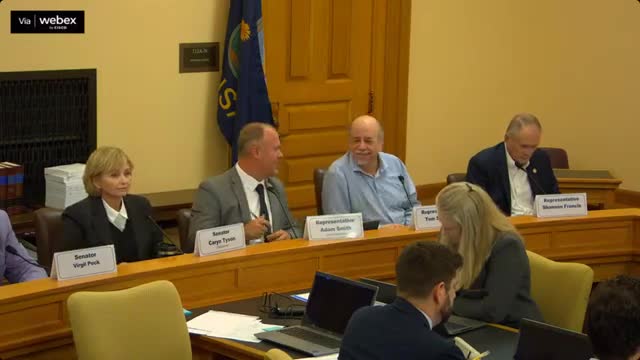Staff review outlines history of Kansas oil-and-gas valuation depletion trust fund and its mechanics
October 13, 2025 | 2022 Special Committee on Taxation, Special & Select, Committees, Legislative, Kansas
This article was created by AI summarizing key points discussed. AI makes mistakes, so for full details and context, please refer to the video of the full meeting. Please report any errors so we can fix them. Report an error »

Eddie (committee staff) presented a detailed history and mechanics of the oil‑and‑gas valuation depletion trust fund, a statutory program enacted in 2005 (via legislative passage tied to 2005 Senate Bill 128 and House Bill 2390) and operated in practice beginning in 2009. The program diverted a portion of the state’s severance tax receipts into county‑level subaccounts for counties that exceeded a $100,000 severance‑tax threshold; those subaccounts were intended to smooth budget impacts when a county’s mineral leasehold taxable value declined substantially.
Under the law’s mechanics, a modest share of state severance tax receipts (the share stepped up in incremental percentages after enactment) was deposited into the trust fund and credited to participating county accounts. If a county’s certified mineral leasehold taxable value decreased by at least 50 percent relative to two years prior, that county could receive 20 percent of its account balance as a distribution; the remainder would remain to protect future declines.
Eddie said the trust fund accumulated roughly $45–50 million through FY2014 but only distributed small amounts to counties while balances grew. In 2014 the Legislature changed the severance tax disposition and at the end of fiscal 2016 the remaining balances were released to counties; the statute was then ended as a forward program. Eddie provided staff calculations showing that if a similar program existed in the recent commodity-price and production cycle, a somewhat different group of counties would have been eligible for distributions and the annual funding amounts would be smaller because current severance tax receipts are a fraction of their mid‑2000s levels.
Why it matters: the program shows one legislative design for insulating counties that rely on mineral leasehold valuations from sharp local tax effects when commodity production or taxable leasehold values decline. The committee asked staff to supply county‑level examples and to quantify distributions under several alternative parameter choices should the Legislature want to examine a similar approach for current mineral declines or other valuation volatility.
Under the law’s mechanics, a modest share of state severance tax receipts (the share stepped up in incremental percentages after enactment) was deposited into the trust fund and credited to participating county accounts. If a county’s certified mineral leasehold taxable value decreased by at least 50 percent relative to two years prior, that county could receive 20 percent of its account balance as a distribution; the remainder would remain to protect future declines.
Eddie said the trust fund accumulated roughly $45–50 million through FY2014 but only distributed small amounts to counties while balances grew. In 2014 the Legislature changed the severance tax disposition and at the end of fiscal 2016 the remaining balances were released to counties; the statute was then ended as a forward program. Eddie provided staff calculations showing that if a similar program existed in the recent commodity-price and production cycle, a somewhat different group of counties would have been eligible for distributions and the annual funding amounts would be smaller because current severance tax receipts are a fraction of their mid‑2000s levels.
Why it matters: the program shows one legislative design for insulating counties that rely on mineral leasehold valuations from sharp local tax effects when commodity production or taxable leasehold values decline. The committee asked staff to supply county‑level examples and to quantify distributions under several alternative parameter choices should the Legislature want to examine a similar approach for current mineral declines or other valuation volatility.
View full meeting
This article is based on a recent meeting—watch the full video and explore the complete transcript for deeper insights into the discussion.
View full meeting
